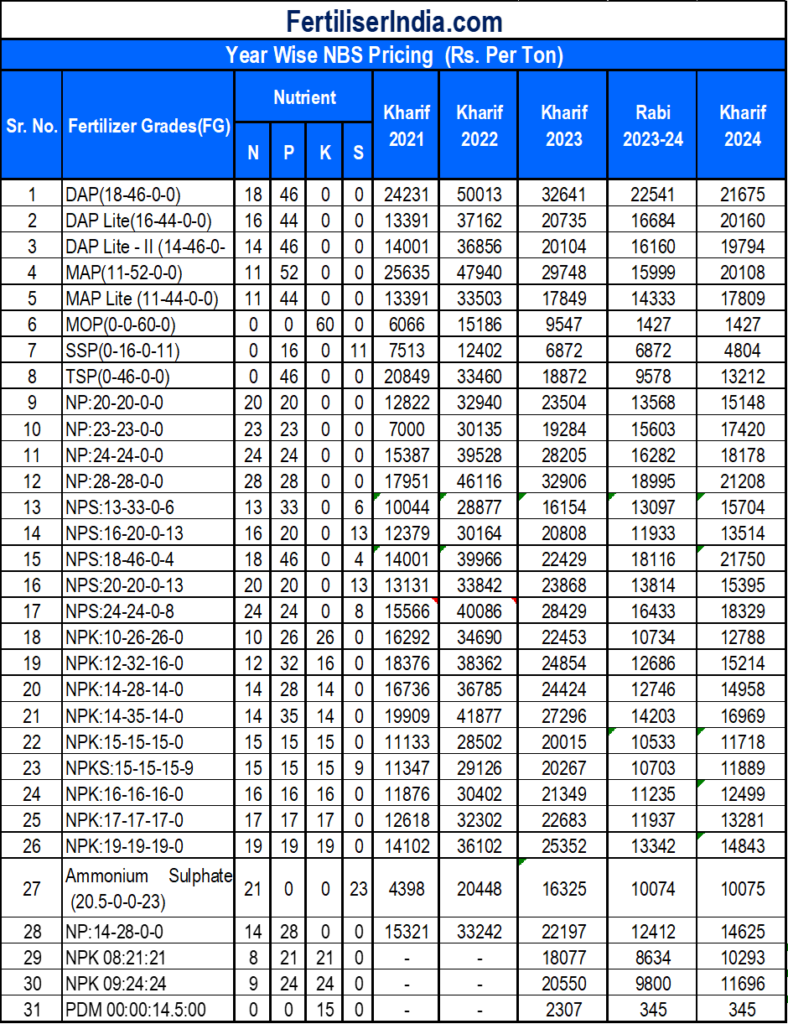India’s agricultural landscape receives a significant boost as the government unveils the eagerly awaited Nutrient Based Subsidy (NBS) rates for the crucial Kharif Season of 2024, spanning from April 1st to September 30th. This landmark announcement encompasses adjustments in subsidy rates for Phosphatic and Potassic (P&K) fertilizers, along with the introduction of three new fertilizer grades under the NBS scheme.
With a tentative budgetary allocation of approximately Rs. 24,420 crore earmarked for the Kharif season, farmers across the nation can anticipate enhanced support and accessibility to essential agricultural inputs, fostering greater productivity and sustainable growth in the agricultural sector.
India stands resolute amidst the tide of escalating global fertilizer prices, opting to maintain stability by retaining prices at the previous season’s level.

For the 2024 Kharif season, the subsidy rates have been set as follows: Nitrogen (N) at ₹47.02 per kg, phosphatic (P) at ₹28.72 per kg, potassic (K) at ₹2.38 per kg, and Sulphur (S) at ₹1.89 per kg.
The subsidy on phosphatic fertilisers has been raised to ₹28.72 per kg from ₹20.82 per kg in the 2023 Rabi season. Meanwhile, the subsidy rates for nitrogen (N), potassic (K), and Sulphur (S) remain unchanged.
In a strategic move, the Indian Budget for the fiscal year 2024-25 (FY25) sets aside ₹1.64 trillion for fertilizer subsidy, showcasing prudent financial management. This allocation reflects a decline from the revised estimate of ₹1.88 trillion allocated in FY24, signaling a focused approach towards fiscal discipline while ensuring continued support for the agricultural sector.

While India strides towards achieving self-sufficiency in urea production, it remains reliant on imports to fulfill its demand for rock phosphate, a vital ingredient for manufacturing DAP and NPK fertilizers. Despite domestic advancements, the nation imports approximately 5 million tonnes of phosphate rock, 2.5 million tonnes of phosphoric acid, and 3 million tonnes of DAP annually. Notably, around 60% of the diammonium phosphate supply and a significant portion of urea and NPK fertilizers—25% and 15%, respectively—are sourced from international markets, highlighting India’s ongoing dependence on imports to meet its agricultural needs.
